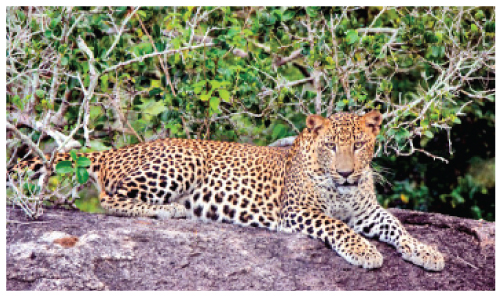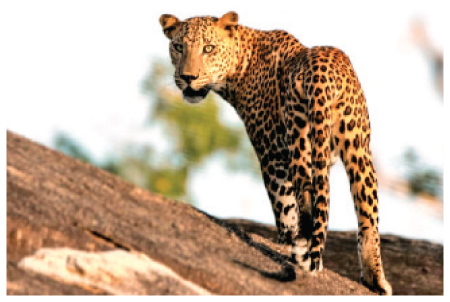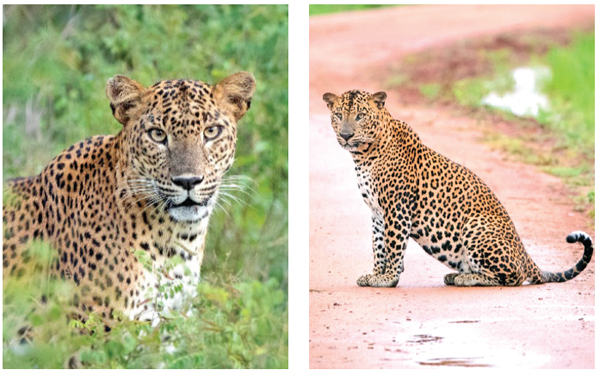
The Yala National Park is Sri Lanka’s second-largest park and is on the southeastern tip of the country. It is bordered by the sea on two sides and surrounded by villages on the other. The area was declared a National Park in 1939 and occupies almost 1,000 square kilometres divided into five blocks each with its particular vegetation and characteristics 
Block 1 is the most popular and crowded area in Yala. One of the best attractions in Sri Lanka is the Sri Lankan leopard (Panthera pardus kotiya) and Yala has the highest density of leopards in Sri Lanka.
Elusive creatures
These elusive creatures are known to be out in the dry season between June and September when rainfall is the lightest. The best chance to spot them is around the new moon. They are more active around dusk during new moon days. Perhaps what has made Yala so famous is its high concentration of leopards, the highest in the world, thanks to the fact that they have no natural predators and, as a result, they are more easily seen parading in their beautiful coats around the park, day and night, without fear of being attacked.
Lacking natural predators other than humans, the leopards of Sri Lanka have evolved to be bigger and less nocturnal than those in Africa, making them easy spot. Given they are at the top of the food chain, Sri Lankan leopards are the King of the Jungle.
 Many people have spotted leopards at least once. Because they are not as scared or shy as elsewhere, you have a good chance of seeing at least one. The park has many animals, although a lot of them are commonly seen in many places across the world so are not as exciting to spot as the leopards. In the rainy season, they are most likely to return to their caves. If you see leopards it’s important to keep quiet and not make any distracting movements because they May hide or run away.
Many people have spotted leopards at least once. Because they are not as scared or shy as elsewhere, you have a good chance of seeing at least one. The park has many animals, although a lot of them are commonly seen in many places across the world so are not as exciting to spot as the leopards. In the rainy season, they are most likely to return to their caves. If you see leopards it’s important to keep quiet and not make any distracting movements because they May hide or run away.
Signs of a leopard’s presence
One sign of a leopard being very near is the monkey’s call. If a leopard is around, monkeys make a sound which is different from their original sound.
The spotted deer are known to be very sensitive animals and if you spot them being scared, there’s a good possibility of a leopard being around.
Rukwila, Indigolla wewa, Mada para, Gona gala and Kota badi wewa are the best places to spot a leopard in Yala. It is not a random name.
Assigning names to the leopards helps research teams in finding them and aids us in recording their movements.
In 1989, Dr. Sriyani Mittapala and her team explained the reliability of identifying individual leopards using a whisker spot identification technique.
Leopard Trails introduced the technique that we use today for identifying and naming individual leopards. Identifying a leopard can be done in a few steps. Features such as broken and short tails, torn ear lobes, and prominent scars whisker and spot patterns help identification.
When the leopards are young, they seem to have more spots.
This is simply because they have the same number of spots, but the spots just appear much more condensed as they haven’t yet stretched out over their growing frames, as they will as they get older.
Rathmal wala 4:5 male leopard
The Rathmal Wala 4:5 male is one of the biggest and the most confident males we can see in the Southern part of Yāla block 1. He was born in late 2014, around the Rathmal Wala area along with two sisters. He is known as the Harak Hora or Cattle Thief as he has hunted buffaloes around Ūraniya and Butthuwa.
Normally, leopards take it easy with buffaloes and set their sights on other types of prey. But not this daring leopard. By 2018, he had a large territory in the Southern regions of Block 1 including the areas of Buthawa Ground, Buthawa Spill Road, Karawgas Wewa, Rathmal Wala, Siyambalagas Wala, Gōnagala Road, and Ūraniya.

Accidents to leopards
Many accidents to leopards have happened due to vehicles. The death of a young female leopard in Yala was thought to be due to a vehicle knocking her.
This decade has had approximately five deaths of leopards due to vehicle accidents.

Yashodhara Paranagama
Grade 9 H
Musaeus College
Colombo
